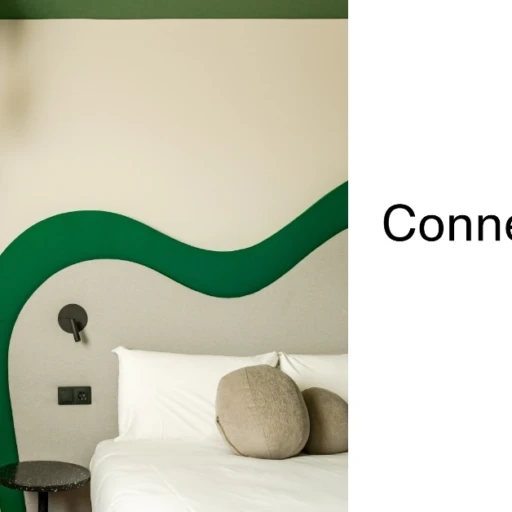The use of shipping containers in construction projects is not a new concept. But what continues to surprise us is their great versatility, as they have an almost infinite capacity to adapt to any use and create new living spaces. The second lives of these metal boxes have a lot to offer: from houses, including emergency housing, to ephemeral classrooms or swimming pools. Now new applications are emerging, such as demountable factories.
MyBox Experience, which has been building homes and other spaces using recycled shipping containers since 2014, is about to build a new factory in Allariz, Ourense. The building will have a surface area of 10,000 metres and will have two areas: one for industrial production and the other for offices. The design is the work of architectural firm Müller-Feijoo and will use some 150 containers, most of which will be 12 metres long.
Ver esta publicación en Instagram
Stadiums made of containers: the 974 in Qatar
The construction model for the factory was inspired by a football stadium at the last World Cup in Qatar. The iconic 974 Stadium, which can seat 40,000 fans, was designed by another Spanish studio, Fenwick Iribarren. It’s the first stadium built using shipping containers974 of them to be exact, hence its name. In addition to being colourful and innovative, it’s a temporary, yet sustainable facility: the intention was to dismantle it at the end of the competition and then reuse it for other purposes.
Ver esta publicación en Instagram
The design of MyBox Experience’s new headquarters is a flexible structure with a long lifespan that could also be dismantled and moved to another location in the future. In fact, it will be one of the first factories in the world that can be deconstructed.
The pioneers of container-based construction
The speed of assembly and disassembly is one of the main characteristics of container-based construction. Architect Rafa Novio, who runs AATaller studio in Santiago de Compostela alongside his business partner Carlos Taboada, is very aware of this. In fact, Novio and Taboada are the pioneers of container-based architecture. In 2003, they were the first to obtain patents for industrial design using containers and their use as a habitable space. “In 164 countries, almost everywhere in the world except Australia,” Novio explains. The patents were needed for an R&D project for the Xunta de Galicia.
London and Rotterdam: similar, but not the same
At that time there were similar projects being carried out elsewhere, including Container City in London and another in Rotterdam, but these projects were not 100% container-based, with the containers having been taken apart or the addition of a metal structure. AATaller’s prototype, which consisted of six containers originally designed to house the Rural Technology Centre, did not, however, sacrifice the character of this standardised transport element. It was habitable, yes, but it was still a container and, if necessary, it could be used on a ship again. This is why he received the patent. The structure is now the studio’s head office.
Ver esta publicación en Instagram
Classrooms that can be built in a few hours
This is how AATaller became a supplier for UNESCO. One of the projects they were involved in was to create a series of computer classrooms for high school students in Morocco. “The classrooms were assembled in one morning with everything they needed: desks, chairs, equipment, electricity supply, internet connection. One container was connected to another on top of a foundation, screwed together, then pressure-locked, and it was ready to go. In the space of three hours, everything was installed,” recalls Rafa Novio. They lost the patent ten years later in 2013. “It was not our goal. Our idea was to keep moving forward and creating new living spaces, to keep innovating. In fact, we don’t make houses out of containers anymore”, Novio explains.
Zero environmental impact
Modular architecture has many other advantages. For example, its impact on the environment is practically zero. “There is almost no rubble or leftover materials like you would usually find on construction sites. These things are reduced to a minimum,” Novio recalls. It also allows for greater control over costs, and, from the outset, its construction is more economical. “For standardised houses, [which are] all the same [and use] an industrialised production chain, of course it’s a great option,” says Novio. When it comes to single-family homes, he adds, “the cost can skyrocket”. Therefore, it all depends on how much someone interested in owning this type of home intends to invest.
Ver esta publicación en Instagram
Containers as social housing
When considered from this perspective, the manufacture of modular houses using containers is one of the best alternatives for social housing. The Ecocontenedores project, which was presented at the World Design Capital Valencia 2022 by the Escola Superior de Disseny de Valencia, is a clear example of how these elements can be used to offer a sustainable, socially responsible living space. It’s also a great example of design that incorporates high-quality materials and finishes. “For this type of housing, containers are an obvious solution,” adds Novio.
Multifunctional and versatile design
The versatility of these structures makes them very useful. From a design point of view, they can be used in a thousand different ways: as a single- or multi-storey structure, horizontally or vertically (as part of stackable structure), or with space between elements. But they also offer many possibilities for creating multifunctional spaces. “You can do almost anything with shipping containers. Schools, hospitals… Almost anything you can imagine”, says Novio.
Ver esta publicación en Instagram
Thermal comfort
The fact that they are sheet metal boxes is not at odds with comfort. Adequate thermal insulation works perfectly in these designs, regulating the indoor temperature so it’s always pleasant. For the AATaller prototype, the research team conducted months of tests both in the freezing cold (by taking the containers to a village near Odessa) and in extreme heat (by moving them to Guinea). “They were in environments of minus 15 degrees and plus 50 degrees Celsius and we found that our insulation [still] worked,” says Novio. In fact, after twenty years, his studio is still in perfect condition: “And with minimal maintenance”.
Ver esta publicación en Instagram
Detachable solar modules on rails
The dismountable nature of these structures is an advantage for applications outside the construction sector, too. Swiss start-up Sun-Ways has developed a patented solution for a detachable photovoltaic power plant mounted on train tracks. The technical part of the project appears to be almost complete, with plans to install solar modules on several hundred kilometres of track in Switzerland by 2025 and elsewhere in Europe by 2030. The first prototype will be installed in 2023. The developers of this innovative photovoltaic solution intend to pre-assemble the modules in the factory and then transport them on a special train to the designated sites, where they will be installed by rolling them out like a carpet. They can then be removed for maintenance work at any time.
Don’t miss our list of seven structures made from shipping containers.




